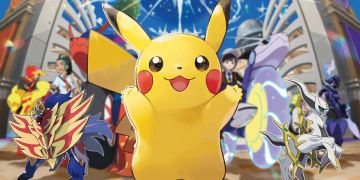Before the release of Halo Infinite by 343 Industries—now known as Halo Studios—in 2021 on Xbox Series X|S, Xbox One, and Windows PC, Halo 5: Guardians made its debut on the Xbox One in 2015. Over time, it evolved into one of the most content-rich shooter games available for Xbox enthusiasts, yet it stirred up quite a bit of controversy for various reasons.
While Halo 5 boasted an incredibly robust Forge mode, an innovative PvPvE Warzone mode, and a wealth of multiplayer content eventually, its initial launch offerings left many players underwhelmed. The gameplay was often criticized as being derivative of its competitors, and the continuation of Halo 4’s controversial art direction changes didn’t sit well with many longtime fans. Arguably the biggest point of contention, though, was the glaring mismatch between the story’s marketing and the campaign’s actual content.
The promotional materials—including the wildly successful Hunt the Truth audio drama by Ayzenberg Group, and multiple trailers and TV spots—delved into the backstory of the series’ protagonist, Master Chief, hinting that he may have committed treason. It also portrayed Spartan Jameson Locke as a character tasked with hunting him down. This narrative angle hooked the audience, creating a buzz of excitement. However, upon playing the game, fans realized that both Master Chief’s actions and Locke’s pursuit were far less dramatic than suggested.
The disconnect was so profound that many gamers felt deceived by the promotions like Hunt the Truth. Interestingly, a new interview with Halo 5 lead concept artist Darren Bacon for VideoGamer reveals that 343 Industries was just as surprised as the fans by the marketing strategies.
Bacon expressed frustration over the situation, noting that the marketing team seemed to operate independently of the developers: “I was listening to Hunt the Truth as it was released and thought, ‘Oh, wow, okay. Is this what we’re doing? They should definitely play the game sometime.'”
There’s been speculation that the disparity between Halo 5’s marketing and the final product, as well as the chaotic storytelling and content issues at launch, stemmed from a lot of content being cut. However, Bacon refutes this, suggesting instead that 343 Industries was simply too ambitious, attempting to pack too much into the game.
“When I first joined 343 from Bungie, I was astounded by the team’s ambition,” he said. “There was an overwhelming amount of content, and I couldn’t believe how much the team was tackling. It was really ambitious.”
He added that the team was pushing hard on both the campaign and multiplayer, and although it didn’t feel like much was cut, it felt as though the story abruptly ended like an unfinished TV series.
Almost a decade after its release, it’s enlightening to uncover the behind-the-scenes challenges that created the divide between Halo 5’s promotional content and its actual narrative. Despite Hunt the Truth being a captivating experience—I, too, remember eagerly awaiting each new episode during my high school bus rides—it undeniably led to misleading expectations for the game.
Nevertheless, Halo 5’s narrative struggles can’t be pinned solely on its marketing. Even removed from its promotional context, the campaign is often viewed as disjointed, with uneven pacing, perplexing character progression, and a runtime many found too brief. Still, it’s good to finally understand why the end product diverged so significantly from what players anticipated.
For those interested, Halo 5, along with every other title like Halo Infinite and those in the Master Chief Collection, is available on Xbox Game Pass. However, unlike Infinite and the MCC, Halo 5 is only accessible on Xbox One and Xbox Series X|S.










![[PS5] Review of Amerzone: The Explorer’s Legacy [PS5] Review of Amerzone: The Explorer’s Legacy](https://www.nogameover.net/wp-content/uploads/2025/04/Amerzone-–-The-Explorers-Legacy-Set-for-Release-Next-Week-360x180.jpg)



































